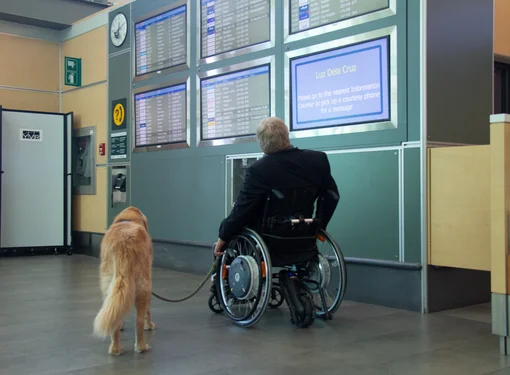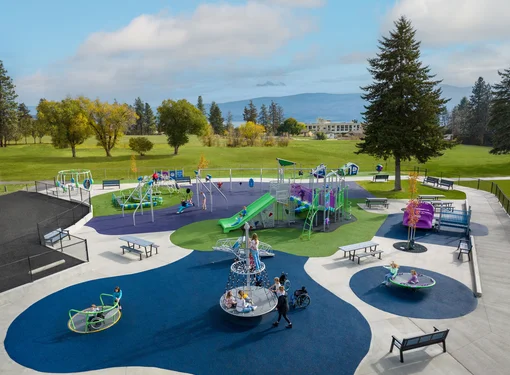The Great (Accessible) Outdoors
After our long (and cold!) Canadian winters, summer is all about soaking up as much fresh air and sunshine as possible.
Enjoying time outdoors has so many health and wellness benefits for both your body and mind like increasing your vitamin D intake; strengthening your immunity; restoring your mental energy and improving concentration and creativity; boosting your mood and decreasing stress, depression and anxiety; and reducing pain and inflammation and promoting healing.
Unfortunately, people with disabilities often aren’t able to participate in their community’s outdoor places and spaces because of physical barriers in the built environment.
How can we help make Canada’s beautiful beaches, trails, parks and playgrounds more accessible and inclusive for everyone? Here are some tips from our RHF Accessibility Specialists.
Some recommendations to make your community beach more inclusive:
- Install paved walkways and/or a sturdy boardwalk that has ramps with coloured wood hand rails down to the sand;
- Install wide rubber mats in a pathway towards the water and along the waterfront for regular wheelchairs;
- Offer beach, all-terrain or floating wheelchairs for rent;
- Build accessible washrooms and change rooms that include adult-sized change tables;
- Set up accessible seating, picnic tables and barbeque pits; and
- Mount tactile maps and signs to provide wayfinding for people who are blind or have low vision (e.g., bathroom and change room signs).
Keep these in mind for accessible local trails:
- Trail has a clear width of at least 1,500mm (ideally 2000mm) to allow two people using wheelchairs or pushing baby strollers to pass;
- Path is level or has a low grade slope (when not accommodated by ramp) and coloured wood handrails are installed where possible on sloped paths;
- There are no obstacles on path or overhead (e.g., outlying roots, low-hanging branches)
- Sheltered seating is available at regular intervals, with and without armrests; and
- Maps and signage are clearly visible and easy to understand and include raised lettering, Braille and symbols.
Accessible Parks and Playgrounds
Parks should have:
- Convenient and accessible pedestrian pathways to the park from accessible parking spots and transit stops;
- Covered rest areas for seniors and others with strength and/or mobility issues;
- Tactile indicators that safe wayfinding for people who have vision loss;
- Aromatic plants to provide wayfinding to various areas such as entrance and seating area for people who have vision loss;
- Accessible picnic tables, water fountains, and washrooms; and
- Animal relief area for service dogs.
And playgrounds should have:
- A ground surface that is level, stable, firm and slip-resistant;
- Accessible equipment for different heights, and with a variety of play opportunities like spinning, sliding, rocking, swinging, crawling, etc;
- Tactile indicators at play zones entries and exits to help children with vision loss find where they would like to play;
- Ramps around the equipment to allow kids in wheelchairs to experience the higher levels of the playground, and sufficient space within and around the playground for them to manoeuver; and
- Seating (both with and without armrests) and covered shelter to allow children and caregivers a place to rest and be protected from the sun.
Do you know how accessible your community’s outdoor spaces are? Use our handy Accessibility Checklist to find out!






